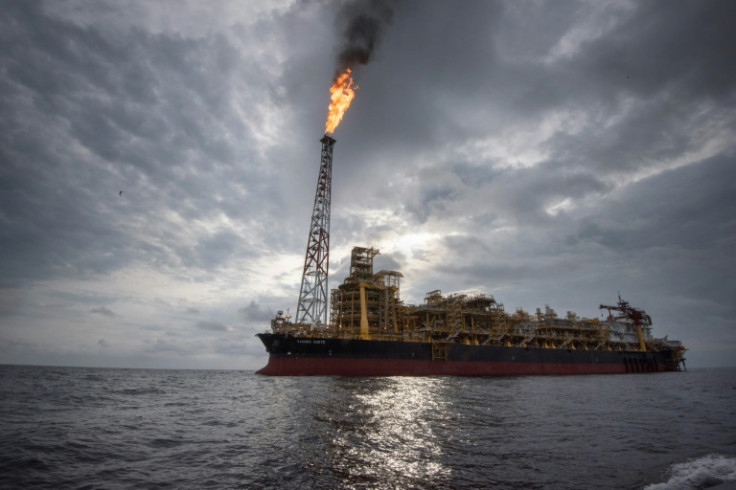Global Oil Prices Trend Down In Early 2024 As US Production Booms, OPEC Flounders

U.S. gas prices continue to trend downward on the back of rising domestic oil output and cooling global inflation. The average price per gallon of regular gasoline in the U.S. is $3.09 as of Wednesday, according to data from AAA -- and the median price is even lower, at $2.79 per gallon.
Average U.S. gas prices have not dipped below $3.10 per gallon since April 2021, still at the height of the Covid-19 pandemic.

The main driving force driving gas prices below $3 per gallon for most Americans: U.S. oil output is at an all-time high, and continues to climb. Daily crude oil production topped 13 million barrels in late 2023 for the first time since 2019, and analysts predict that 14 million barrels per day is feasible for the end of 2024 given the rate of new oil well construction in Texas' Permian and Eagle Ford deposits.
In addition to being the world's leading crude oil producer, the U.S. opened 2024 as the No. 1 exporter of liquefied natural gas (LNG), having overtaken both Australia and Qatar in late 2023, according to data compiled by Bloomberg in December. Two new LNG export facilities are slated to begin operation in Texas and Louisiana in 2024, adding an additional 38 million tons of LNG to U.S. capacity.
The U.S. isn't the only major oil producer boosting output and depressing consumer prices in early 2024. CNOOC began production of a new offshore production facility in Brazil's Santos Basin on Tuesday, adding 180,000 barrels of crude oil per day in capacity to the country's growing fossil fuel output. Canada's oil production will also expand to record levels in 2024, S&P Global predicts.
But despite growing production in the Western Hemisphere, global crude prices have remained steady over the last month (between $65 and $75 per barrel) as OPEC weighs production cuts and Middle East geopolitical tensions continue to flare.
Increasingly frequent attacks on Red Sea commercial shipping vessels by the Yemeni Houthis has already led BP and Equinor to pause shipping through the Suez Canal, inflating the price of European crude oil imports. The Houthis claimed to have attacked yet another commercial vessel on Wednesday, although naval forces present in the area could not confirm the validity of an attack.
OPEC+ will continue its voluntary 2.2 million barrel oil production cut through the early part of 2024, the largest share of which is accounted for by a 1 million barrel reduction by Saudi Arabia. OPEC's production cut policies have come under fire lately from certain members.
Angola left the organization in December over a disagreement about the production cap agreed to in November; independent analysts predict that Russian oil production will remain steady in 2024, instead of committing to reducing output; and new OPEC+ member Brazil publicly stated its desire to remain exempt from production quotas. OPEC+ will hold a ministerial council meeting in early February to review the existing cuts.
© Copyright IBTimes 2024. All rights reserved.












